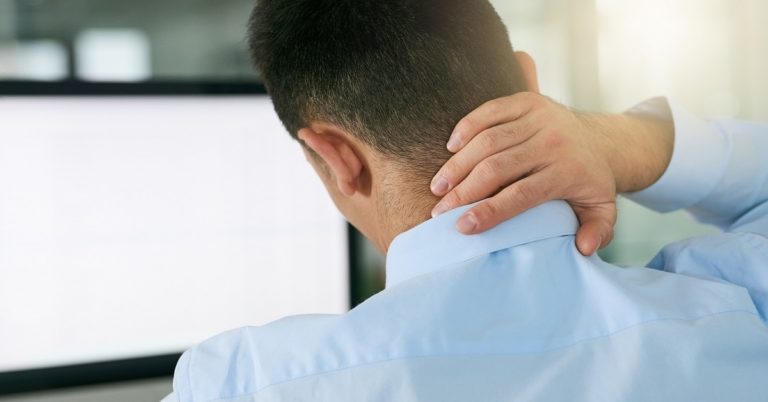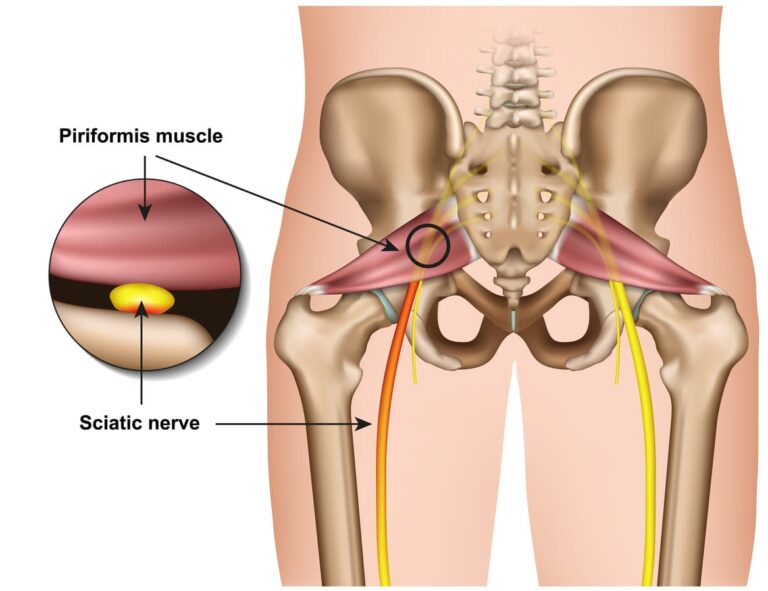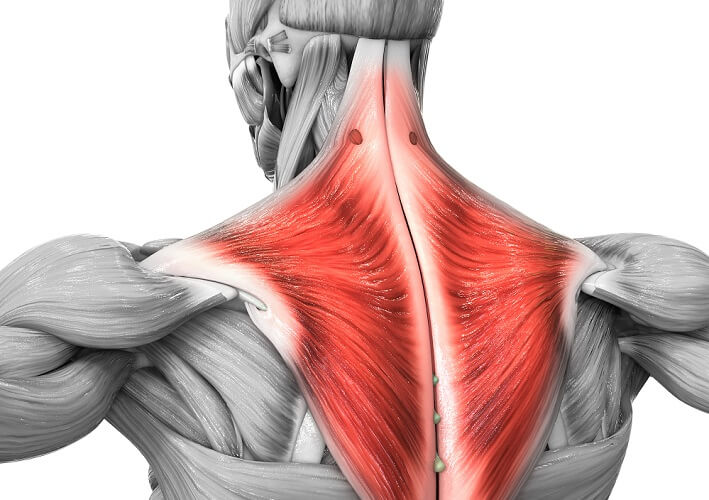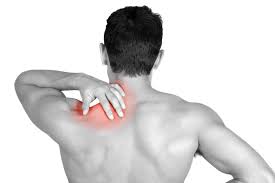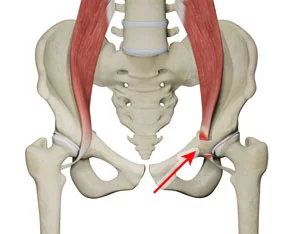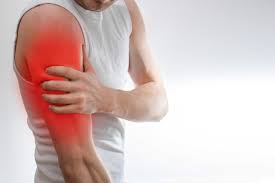Muscle spasm in the foot :
Muscle spasm in the foot is caused by an uncomfortable & painful conditions of the muscles in your feet.
Muscle spasms are described as an uncontrollable & involuntary muscle contraction.
Due to these muscle spasms or contractions not allowing the muscle to become relaxed & also become too excruciating in some cases.
Foot spasm is extremely become too uncomfortable for any people & it is either sporadic & chronic.
It occurs due to the arches of your feet on top of your feet & around your toes.
Due to this foot spasms stop in your tracks, limiting your mobility in your feet & even freezing the muscles in a spasm till the cramp passes.
This muscle spasm is produce intense pain &this pain stays last for minutes, hours & days then relax the muscle spasm.
This muscle spasm is released by to RICE principle, pain medication, massage & physiotherapy treatment.
Table of Contents
What are the causes of foot spasms?
- Too-tight shoes:
- When occurring foot spasms occur due to your shoes becoming too tight.
- Because too-tight shoes rub blisters on your feet & cut off circulation.
- It is created by muscle spasms in your feet & constricted movement.
- You can wiggle your toes inside your shoes & your toes or feet are not fall asleep when you wear them.
- Dehydration:
- When you become too dehydrated, it also produces muscle spasms.
- When your body becomes too dehydrated you are not getting enough water for your organs & tissues to function properly. Because when you are dehydrated means your muscles are not getting the water, and they start to malfunction, which produces pain & spasms associated with the spasm.
- When you neglect to drink enough water it becomes dehydration.
- You also become too dehydrated when you are losing fluid like gastroenteritis infections which lead to vomit & diarrhea.
- Overexertion:
- Exercising too much & too hard which is put unneeded strain on the muscles in your feet and leads to a muscle cramp.
- When you do work out too hard it produces muscle spasms.
- On the other hand, you are not in great physical shape & doing too much, too fast which is lead to muscle spasms.
- Low levels of potassium:
- Potassium is an electrolyte that helps to control muscle cell & nerve functioning.
- When the body occurs to low potassium it produces muscle spasms, particularly in the feet & legs.
- This spasm occurs to chronic low potassium & hypokalemia which is produced in your muscles.
- Nerve damage:
- When occur to damage to the nerves in your feet which is also known as peripheral neuropathy produces pain due to muscle spasms.
- This nerve damage produces to your feet & hands to feel numb, painful & weak.
- Diabetes commonly leads to nerve damage but it is also caused by toxin exposure, an injury infection, genetic issues & metabolic issues.
- Poor circulation:
- This condition happens when your body lacks sufficient blood flow.
- Circulation sends blood, oxygen & nutrients through your body.
- Rheumatoid arthritis:
- This condition is produced by foot spasms
- This autoimmune disease attacks the joints which produce inflammation & makes the joint tissue thicken.
- During this time, the joints lose their mobility.
Position:
- Some daily positions also lead to muscle spasms including:
- Sitting position :
- When you stay in a sitting position for long periods & otherwise be inactive which is lead to the muscles in your feet spasming at night.
- If you stay in a sitting position with poor posture it also inhibits blood flow to your feet & leads to nerve compression with foot muscle spasms.
- Sleeping position:
- First, you examine how you sleep to see when it contributes to nighttime spasms.
- You must be sleeping with your feet pointing downwards which is contribute to poor circulation.
- Must be sleeping on your back & side with a pillow underneath your knee joint.
- Improper footwear & hard surfaces:
- You are wearing poorly fitted shoes & shoes without enough support throughout the day which is foot muscles
- In the standing position or working on concrete floors & also other hard surfaces which are produced to a similar effect.
- The foot muscles also work extra hard to support the weight of your body.
- When you wear improper footwear it also impairs the foot’s circulation, cutting off blood or oxygen & producing painful spasms even when you are off your feet.
- Excessive alcohol use:
- When you drink too much alcohol it leads to nerve damage & a condition known as alcoholic neuropathy.
- Symptoms include anything from muscle spasms & weakness to numbness or tingling in the foot.
- Heavy alcohol is also used to contribute to dehydration & nutritional deficiencies in important B vitamins.
- Health issues & medications:
- Medical conditions associated with foot spasms include:
- Some metabolic issues like kidney disease, hypothyroidism, anemia & type 1 or type 2 diabetes.
- Some structural issues, like spinal stenosis & peripheral arterial disease.
- Other conditions, like osteoarthritis, nerve damage & Parkinson’s disease.
- When the muscle is become fatigued due to overuse.
- Lack of electrolytes in the body.
- If occur to involuntary nerve discharges.
- Restriction of the blood supply.
- Exercise in high temperatures
What are the symptoms of the foot muscle spasm?
- You feel clenched & contracted muscles tightened into a knot.
- You also feel too severely uncomfortable & painful with even unbearable.
- You are observed to have tightness in the muscle with swelling.
- You are palpated to tightness in the muscle with swelling.
- Also present feeling of trigger & tender points in the muscle spasm.
- This muscle spasm is produced by pain in the area.
- You are also feeling difficulty in the movement of your foot due to weakness.
- You feel numbness in the foot.
- You have observed changes in the skin of your foot like redness which is produced due to inflammation.
- You also feel warm around the spasm area.
What is the Diagnosis of the foot muscle spasm?
It becomes too challenging for any health care provider the cause of foot spasms.
- First, the doctor takes a full medical history.
- Sometimes physical examination & imaging scans of the foot are necessary.
- If the patient presents with other symptoms then the doctor is advised to explore whether & check whether the symptoms are related to the muscle spasms or not.
- Your doctor is also advised to X-ray for signs of arthritis & bone fracture.
- Also, advise an MRI or CT scan to gain a better look at the muscles & other soft tissues.
- These scans help to identify possible problems with the discs & with blood supply to the affected area.
In which condition do you need to contact a doctor as an emergency?
- Some causes of foot spasms are more serious than others causes so that need to contact your doctor when :
- If your foot spasm is the result of an injury & a fall.
- If due this spasm develops into weakness in the foot & feel difficulty walking.
- When you feel trouble & difficulty in moving your foot.
- If your foot spasm symptoms become too difficult for sleeping & take part in normal activities.
What is the treatment for foot muscle spasms?
RICE principle:

When you feel pain in the foot muscle doctor is advised to RICE principle as home treatment or primary treatment.
- R – rest = When you feel muscle pain doctor is advising you to rest for sometimes form activities for release to muscle pain.
- I- ice = You are Applied to ice on the area of the pain for 20 minutes, release to swellings & muscle pain but always applied to the ice with the help of a towel between the skin & ice to prevent ice burn, you can also be used to ice pack & frozen peas for ice therapy.
- C- compression = You can also apply compression bandage release to muscle pain, and swelling.
- E- elevation = You must be elevated to the leg with the help of a pillow under the foot for release of muscle pain & swellings.
Pain medication:
- The doctor is advised to some medications including:
- A muscle relaxant = Carisoprodol
- A calcium-channel blocker drug = Diltiazem, Verapamil.
- Orphenadrine drug = this drug is used to release muscle spasms and relieves pain & stiffness in muscles.
- Over-the-counter drug means nonsteroidal anti-inflammatory drugs = NSAIDs like ibuprofen (Advil, Motrin) & naproxen (Aleve)which help to reduce inflammation & relieve the pain of neck spasm.
- You can also apply pain-reliving gel & spray like volini gel & spray on the area of muscle pain release to muscle pain & swellings.
Moist heat:
- You are also applying moist heat to the affected area – the muscle spasm area which also helps with the recurring foot spasms. you are applying moist heat to the spasm area using a heating pad & a damp & warm cloth.
Treatment of the too-tight shoes:
- When the foot spasm occurs due to too tight shoes or poorly made you have your feet measured & double-check the size.
- You must be wearing against the size of your shoe.
- When the size is correct, it is possible to your shoes do not have the proper support, so you need to switch shoe styles & brands.
- You also add supportive insoles & arch for support & ease the muscle spasms.
Treatment of dehydration:
- hen the foot spasm occurs due to dehydration drink water as well as a rehydration drink with the electrolytes like Gatorade.
- You are also making your rehydration drink with 1/2 teaspoon of salt, 6 teaspoons of sugar & 1 liter of water.
- when occur to severe dehydration which is a medical emergency & so you go to the emergency room.
- in this condition, the doctor prescribes intravenous (IV) fluids.
Treatment of overexertion:
- When the foot spasm occurs due to overexerting so the doctor recommends taking this situation easy.
- While you feel probably need to continue exercising, you just need to reduce how much you are doing till your muscles are ready to take on more.
Treatment of low levels of nutrients:
- When the foot spasm occurs due to calcium (hypocalcemia), low potassium (hypokalemia) & magnesium (hypomagnesemia) your doctor recommends supplementation.
- In mild cases, oral supplements are brought your levels up but in severe cases, you need IV potassium.
Treatment of nerve damage:
- When your foot spasm occurs due to nerve damage first you want to pinpoint the reason for this condition.
- The doctor advises medications for pain relief, antidepressants, topical creams (like capsaicin or lidocaine) & medications that are also used for epilepsy which help to ease nerve pain from peripheral neuropathy.
- Other treatments for neuropathy may include:
- Plasmapheresis
- TENS therapy
- Surgery
- Physical therapy
- IV immune globulin
What is Physiotherapy treatment for foot muscle spasms?
When the muscle spasm is not relieved after the home treatment & pain medication then the doctor has advised physiotherapy treatment to release the muscle spasm.
Physiotherapy treatment is help you relieve pain, swelling, muscle spasm & tightness of the muscle pain.
The physiotherapy treatment includes massage, electrotherapy treatment & exercise therapy.
Massage therapy:
- Massage therapy helps you relax, which is help calm your tight muscles & ease the pain from your foot spasm.
- You are applied gentle pressure on the stiff & tender points which is help you release tension from the constricted muscles, providing relief & restoring range of motion – ROM to your neck.
- This massage therapy also increases blood flow to the foot, which is applied to speed up healing by starting the nutrients & oxygen to damaged muscles.
- Massage is applied after 2 – 3 days of following the RICE principle when you feel to release of the pain.
- Massage is applied with the help of the oil & applied for 5 -10 minutes.
- Massage is applied 3 times per day at home.
Electrotherapy treatment :
After the RICE principle, pain medication & massage if the muscle pain is not relieved then used Electrotherapy treatment for released to muscle pain.
To relieve the swellings, spams & pain therapist is advised to you electrotherapy treatment.
In electrotherapy, the treatment therapist is used to many machines.
- When the trigger & tender points are present therapists are advised & to apply US = ultrasound therapy for the release of muscle pain.
- This treatment is applied with the help of gel & applies for 5 to 10 minutes on the area of pain.
- This therapy helps you release pain & swelling.
- Reduce to pain therapist is applied to SWD = short wave diathermy on the area of pain.
- SWD = Short wave diathermy is hot therapy for release to spams on the area of pain.
- This therapy is applied for 10 minutes to the area of pain.
Exercise therapy for foot muscle spasm :
After following the RICE principle for 2- 3 days at home & primary treatment & the help of pain medication, you feel released from the muscle spasm.
When you feel too comfortable & release from your muscle spasm then the physiotherapist is advised to you exercise therapy reduce to muscle weakness & tightness.
because when occurring muscle spasm also leads to muscle weakness & tightness so the need to exercise therapy strengthens the muscle.
The exercise therapy for muscle pain includes Stretching & strengthening Exercises.
Stretching exercise helps to relieve muscle tightness as well as strengthening Exercise is help you relieve muscle weakness.
Stretching exercise:
After the follow of Electrotherapy for 2-3 days for release to muscle spasm by physiotherapist then the therapist is advised to stretch for release to muscle tightness.
This stretching is applied when your pain is released & when you feel comfortable.
- Achilles stretch
- Towel stretch
- Standing Calf Stretch

Achilles stretch:
- Start this stretching by standing near a wall & other support, like a chair, with your hands on the wall at eye level.
- First, place your left leg a step behind your right leg.
- Try to keep your left heel on the floor & bend your right knee joint till you feel a stretch in your left leg.
- Then bend your back knee joint bent slightly to stretch your Achilles tendon.
- Hold this stretching position for 30 seconds & repeating it 3 times on each leg.
Towel stretch:

This stretching exercise requires a bath & pool towel.
- You are in a sitting position on the ground with your feet straight out in front.
- Then take the towel & wrap it around the toes of one foot.
- Try to gently pull back till a stretch runs from the bottom of the foot up to the back of the lower leg.
- Hold this stretching position for 30–60 seconds.
- Perform to the other leg &repeat.
- You are performing this exercise 2–3 times on each side.
Standing Calf Stretch:

This stretching exercise requires a sturdy closed door & a blank wall.
- You are standing facing the wall or door.
- First place the palms against the door which is slightly higher than the shoulder joint.
- Try to step back into a split stance.
- Must be keeping both feet flat on the ground with the toes pointing forward.
- Then slowly lean forward & bend the front knee joint to feel a stretch in the lower part of the back leg.
- Hold this stretching position for up to 30 seconds.
- When you are not feeling the stretch, you can try bending the back knee joint slightly while pushing the heel into the floor.
- You are performing this exercise 2–3 times on each side in 1 session & 3 sessions per day.
Strengthening Exercises:
After the follow of Electrotherapy & massage for 2 -3 days for release to muscle pain by physiotherapist then the therapist is advised to you strengthening exercise for release to muscle weakness.
This strengthening exercise is always advised when you feel to release pain & when you feel comfortable.
This all strengthening exercise helps to you muscle weakness & pain.
- Toe raise, point, and curl
- Toe splay
- Toe curls
- Marble pickup
- Sand walking
- Toe extension
- Golf ball roll
- Toe pulls
- Big toe pulls
This exercise is performed in three stages & helps strengthen all parts of the feet and toes.
- You are sitting up straight in a chair & your feet flat on the floor.
- Must be keeping the toes on the floor & raise the heels.
- Stop this exercise when only the balls of the feet remain on the ground.
- Hold this exercise position for 10 seconds before lowering the heels.
- For the second stage of exercise :
- First, raise the heels & point the toes so that only the tips of the big & second toes are touching the floor.
- Hold this exercise for 10 seconds before lowering the heels.
- For the third stage of exercise :
- First, raise the heels & curl the toes inward so that only the tips of the toes are touching the floor.
- Hold this exercise position for 10 seconds.
- Build flexibility & mobility by repeating each stage 10 times.
Toe splay:
- You are sitting in a straight-backed chair, with your feet gently resting on the floor.
- Try to spread the toes apart as far as possible without straining.
- Hold this exercise position for 10 seconds.
- Repeat this exercise 10 times.
Toe curls:
- You are sitting up straight in a chair & your feet flat on the floor.
- First, lay a small towel on the floor in front of the body & the short side facing the feet.
- Then place the toes of one foot on the short side of the towel.
- Then grasp the towel between the toes & pull it toward oneself.
- Repeat this exercise 10 times before switching to the other foot.
- To make this exercise more challenging, try weighing down the opposite end of the towel with an object.
Marble pickup:
- You are sitting up straight in a chair & your feet flat on the floor.
- First place an empty bowl & a bowl of 20 marbles on the floor in front of the feet.
- With the use of only the toes of one foot & pick up each marble.
- Then place the marble in the empty bowl.
- Repeat this exercise 10 times.
Sand walking:
- First select a beach, a volleyball court, a desert & any other location with sand.
- Then remove the shoes or socks.
- You are walking for as long as possible.
- Try to increase the distance slowly over time to avoid overexerting the muscles in the feet & calves.
Toe extension:
- You are sitting up straight in a chair & your feet flat on the floor.
- First, place the left foot on the right thigh.
- Try to pull the toes up toward the ankle joint.
- You feel the stretching along the bottom of the foot & heel cord.
- Hold this exercise for 10 seconds.
- Then Massage the arch of the foot while stretching which is help ease tension & pain.
- Repeat this exercise 10 times on each foot.
Golf ball roll:
- You are sitting up straight in a chair & your feet flat on the floor.
- First place a golf ball, another small & hardball — on the floor next to the feet.
- You lay one foot on the ball & move it around.
- Try to press down as hard as is comfortable.
- This ball helps to massage the bottom of the foot.
- Continue this exercise for 2 minutes, then repeat this exercise on the other foot.
Toe pulls:
- You sit down & place a thick rubber band around all five toes.
- Try to spread the toes & hold for 10 seconds.
- Repeat this exercise 10 times.
- Switch the feet & do this exercise again with the other foot.
Big toe pulls:
- You are in a sitting position.
- Then put the two big toes next to one another & also put a thick rubber band around both of them.
- Try to pull the toe apart in a motion to separate the toe & moving each toe toward the little toes
- Hold this stretching position for 10 seconds & repeat 10 times.
How do prevent the foot muscle spasm?
- You must stay hydrated
- And drink 6 to 8 glasses of water every day.
- Don’t drink as much alcohol & caffeine.
- Adjust your sleep.
- You must use pillows to keep your toes pointed upwards when you sleep on your back.
- When you lie on your front, try to hang your feet over the end of the bed.
- Both positions feel you in a relaxed position.
- Always gently stretch your foot muscles before exercise.
- Must be kept blankets & sheets loose around your feet so that your toes are not distorted.
- Always wear shoes which fill you well & support your feet.
- Medications & vitamins = you must take all vitamins & medications.
- Perform frequent foot exercises.
- You are preparing your bed space = must keep a heating pad & massage roller next to your bed.


